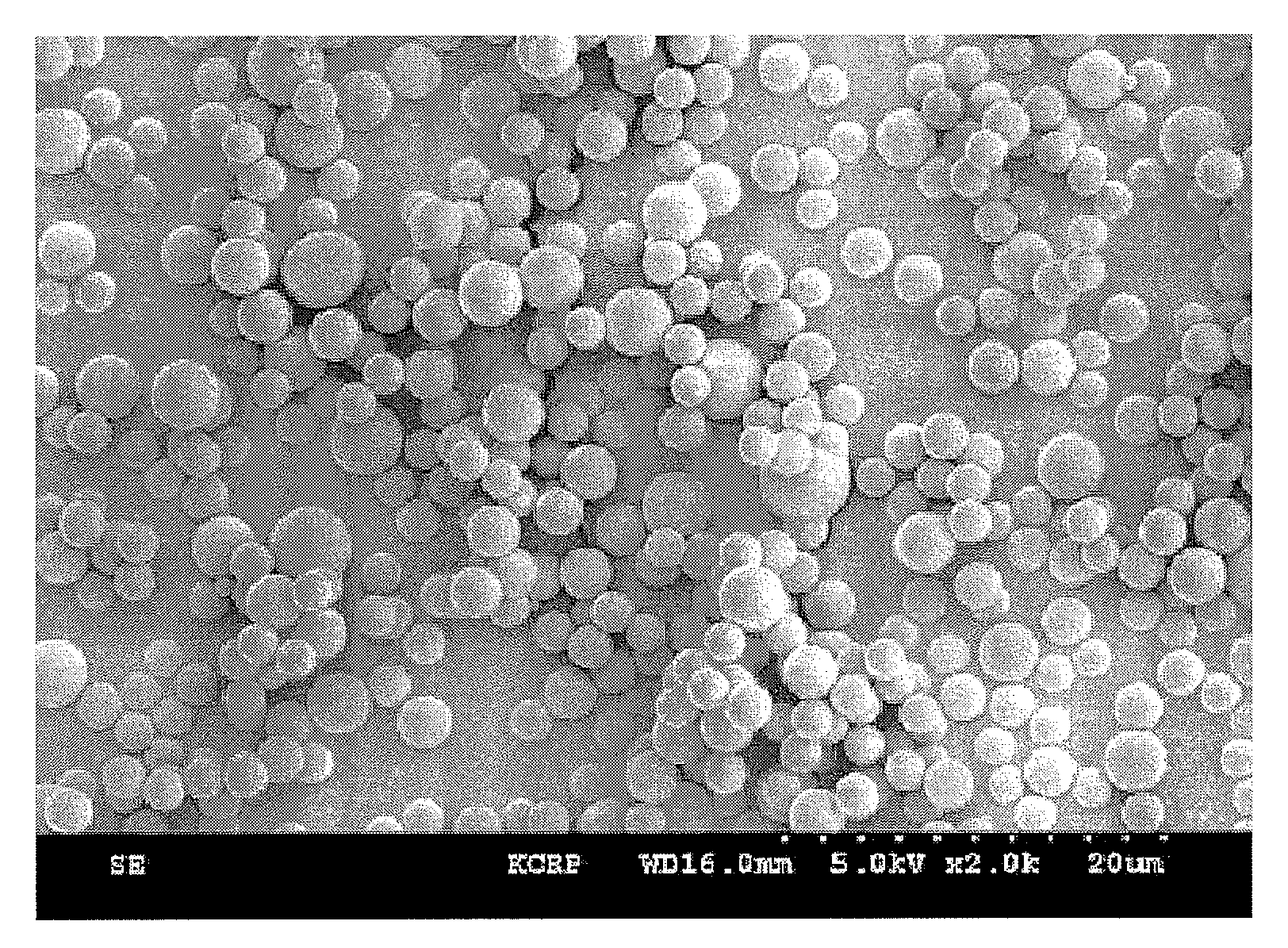Polyalkylsilsesquioxane particulates and a preparation method thereof
a technology of polyalkylsilsesquioxane and particulates, which is applied in the field of polyalkylsilsesquioxane particulates, can solve the problems of low efficiency of polymerization time and device volume production, difficult control of stirring speed and maintaining interface, and low water repellency, etc., to achieve low hygroscopic property, high water repellency, and high hygroscopic property
- Summary
- Abstract
- Description
- Claims
- Application Information
AI Technical Summary
Benefits of technology
Problems solved by technology
Method used
Image
Examples
example 1
[0057]The polyalkylsilsesquioxane particulates were prepared by the following steps.
[0058]The 1st Step
[0059]After introducing 950 parts by weight of ion-exchanged water and 0.3 parts by weight of acetic acid into a round 2L flask and dissolving them so that pH thereof was 2 to 4,600 parts by weight of methyltrimethoxysilane was introduced therein. The solution was stirred at 200 rpm, after purging with nitrogen for 5 minutes. The inner temperature of the mixed solution was elevated to 42° C. after 3 minutes, and the methyltrimethoxysilane was completely dissolved and an alkylsilanetriol or a partial hydrolysate thereof was obtained in the form of a homogeneous solution after about 3 hours.
[0060]The number-average molecular weight of the alkylsilanetriol or the partial hydrolysate thereof was analyzed with a water model 150 GPC by using tetrahydrofurane (THF) solvent, and the number-average molecular weight was 430.
[0061]The 2nd Step
[0062]500 parts by weight of the alkylsilanetriol o...
example 2
[0068]The polyalkylsilsesquioxane particulates were prepared substantially according to the same method as in Example 1, except that vinyltrimethoxysilane was used instead of methyltrimethoxysilane, and the properties of the prepared polyalkylsilsesquioxane particulates were measured according to conventional methods and the results are listed in the following Table 1.
example 3
[0069]The polyalkylsilsesquioxane particulates were prepared substantially according to the same method as in Example 1, except that vinylmethylmethoxysilane was used instead of trimethylmethoxysilane, and the properties of the prepared polyalkylsilsesquioxane particulates were measured according to conventional methods and the results are listed in the following Table 1.
PUM
| Property | Measurement | Unit |
|---|---|---|
| Temperature | aaaaa | aaaaa |
| Temperature | aaaaa | aaaaa |
| Temperature | aaaaa | aaaaa |
Abstract
Description
Claims
Application Information
 Login to View More
Login to View More - R&D
- Intellectual Property
- Life Sciences
- Materials
- Tech Scout
- Unparalleled Data Quality
- Higher Quality Content
- 60% Fewer Hallucinations
Browse by: Latest US Patents, China's latest patents, Technical Efficacy Thesaurus, Application Domain, Technology Topic, Popular Technical Reports.
© 2025 PatSnap. All rights reserved.Legal|Privacy policy|Modern Slavery Act Transparency Statement|Sitemap|About US| Contact US: help@patsnap.com



